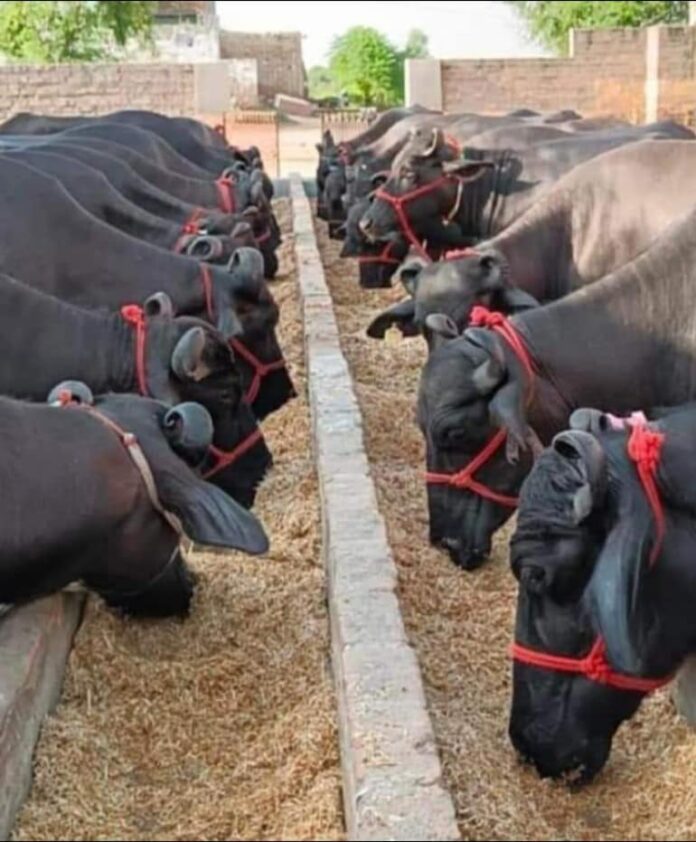Low Productivity of Indian Dairy Animals: Challenges & Mitigation Strategies
India is the world’s largest producer of milk, yet it faces significant challenges in dairy productivity. The average annual milk yield per cow in India is considerably lower than the global average. This low productivity is attributed to several factors, including poor nutrition, inadequate veterinary care, and inefficient farm management practices.
- Challenges
- Poor Nutrition and Feed Quality- Many Indian dairy farmers rely on traditional feeding practices, leading to inadequate nutrition for dairy animals. Quality feed and fodder are often scarce and expensive, limiting access for small-scale farmers .
- Health Issues-Frequent outbreaks of diseases like Foot and Mouth Disease (FMD), Black Quarter, and the recent Lumpy Skin Disease significantly impact livestock health and productivity. Additionally, there is often a lack of regular immunization and deworming schedules .
- Genetic Potential-Crossbreeding efforts to enhance genetic potential have had limited success. Indigenous breeds, while well-adapted to local conditions, often have lower milk yields compared to exotic breeds.
- Inadequate Farm Management–Many farms suffer from inadequate management practices, including poor housing, lack of clean water, and insufficient veterinary services. This results in lower milk production and higher calf mortality rates.
- Fragmented Supply Chain- The dairy sector in India is largely unorganized, with a significant portion operating in the informal sector. This fragmentation leads to inefficiencies in milk collection, transportation, and quality control.
- Economic Constraints–Small and marginal farmers often have limited access to financial resources, preventing them from investing in better feed, healthcare, and breeding programs. Moreover, the pricing policies do not always favor these farmers, leading to poor returns on their milk production.
Mitigation Strategies
- Improved Nutrition-Developing and promoting balanced, scientifically designed animal fodder can significantly enhance milk yield. Subsidies or financial support to farmers for purchasing quality feed could also be beneficial.
- Enhanced Veterinary Care-Implementing regular vaccination programs and improving access to veterinary services can help maintain herd health. Mobile veterinary clinics and tele-veterinary services could provide timely care to remote areas.
- Genetic Improvement Programs-Expanding artificial insemination (AI) services and using advanced reproductive technologies like in-vitro fertilization (IVF) and multiple ovulation embryo transfers (MOET) can enhance the genetic potential of dairy animals. Programs like the Rashtriya Gokul Mission aim to improve the genetic quality of indigenous breeds.
- Training and Education-Providing dairy farmers with training on best practices in dairy farming, including modern breeding, feeding, and healthcare techniques, can improve productivity. Education programs should be participatory and include on-ground demonstrations.
- Strengthening Cooperatives-Encouraging the formation of more dairy cooperatives can help organize the sector, improve milk quality and quantity, and provide better market access to farmers. Cooperatives can also facilitate the provision of financial services and bulk purchasing of inputs.
- Improving Supply Chain Infrastructure- Investing in cold storage facilities and refrigerated transportation can reduce milk wastage and ensure fresher products reach the market. Enhancing logistics through better infrastructure and technology can streamline the dairy supply chain.
- Financial Support and Policies Implementing minimum support prices (MSP) for milk, similar to those for agricultural commodities, can ensure fair prices for dairy farmers. Providing subsidies for feed and veterinary services can also alleviate some of the financial burdens on small farmers.
Conclusion
Addressing the low productivity of Indian dairy animals requires a multifaceted approach, involving improvements in nutrition.
Presented by:-
Swetlana khalkho
Bvsc.AH ranchi veterinary clg
Internship student



